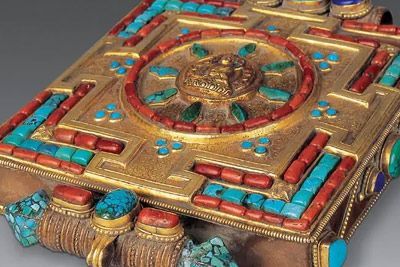Intangible culture with Related Tags
Heritage with Related Tags
Great Khan Palace Scenic Area
The Great Khan Palace Scenic Area is located in the first grassland in northern Beijing. The northern grassland is located in the north of Beijing, bordering Huairou, 280 kilometers away from Beijing. It is the closest grassland tourist area to Beijing. The average temperature in summer is 17.5 degrees. It has been known as a summer resort since ancient times. The total area of the scenic area is 2 million square meters. The place where it is located was called Liangxing during the Yuan Dynasty. In March 1212 AD (the seventh year of the reign of Emperor Taizu of Mongolia), Genghis Khan Temujin led his army to defeat the three states of Huanchang and Fu, and occupied the Liangxing and Tanshan areas. In 1215 AD, Genghis Khan camped here to escape the summer heat when he personally conquered the south of the desert, and commanded the Mongolian war against the Jin Dynasty. The scenic area will rely on its own historical and cultural background advantages and regional advantages, with the theme of tracing historical culture and getting close to nature, advocating that the society regain the precious historical culture of the Yuan Dynasty.
Bangchui Mountain
Bangchui Mountain is located in the Qingchui Peak National Forest Park. There is a stone on the mountain. It is thick on the top and thin on the bottom, shaped like a mallet, so the mountain is commonly known as "Bangchui Mountain". The upper diameter of the stone is 15.04 meters, the lower diameter is 10.7 meters, and the height is 38.29 meters. Together with the protruding base under the mallet, it is 60 meters high. There is a mulberry tree in the middle of Bangchui Mountain, named Mengsang (also known as Yasang), which bears mulberries. There is a temple 300 meters north of the peak. There are cliff carvings on the stone wall of the temple. From north to south, they are: Maitreya Buddha, the Seventh Dalai Lama (Gesang Gyatso), Tsongkhapa, the Fifth Panchen Lama, Immovable Vajra, Milarepa, and Auspicious Goddess. To visit Bangchui Mountain, you can take the cableway directly at the foot of the mountain, or you can walk up the mountain via Pule Temple.
Bangchui Peak Forest Park
Bangchui Peak Forest Park is commonly known as Bangchui Mountain, and was called Shiting in ancient times. It is located on the top of a mountain on the east bank of Wulie River in the northeast of Hebei City. It stands on a high mountain hill about ten miles east of Bishu Mountain Villa, about 2.5 kilometers away from the city. It is suspended by a cliff below and connected to the blue sky above. The situation is extremely dangerous. The peak is thick at the top and thin at the bottom, shaped like a club. It is 596 meters above sea level, with a diameter of 10.7 meters at the bottom and 15.04 meters at the top. It is 38.29 meters high. Together with the protruding base under the club, it is 60 meters high. There is a mulberry tree halfway up the club, named Mengsang (also known as Yasang), which is 3 meters high and about 30 centimeters in diameter. It has about 300 annual rings and bears white mulberries that are fat and large. For 300 years, Shifeng and Mengsang have been dependent on each other. Mengsang relies on Shifeng for survival, and Shifeng is interesting because of Mengsang.
